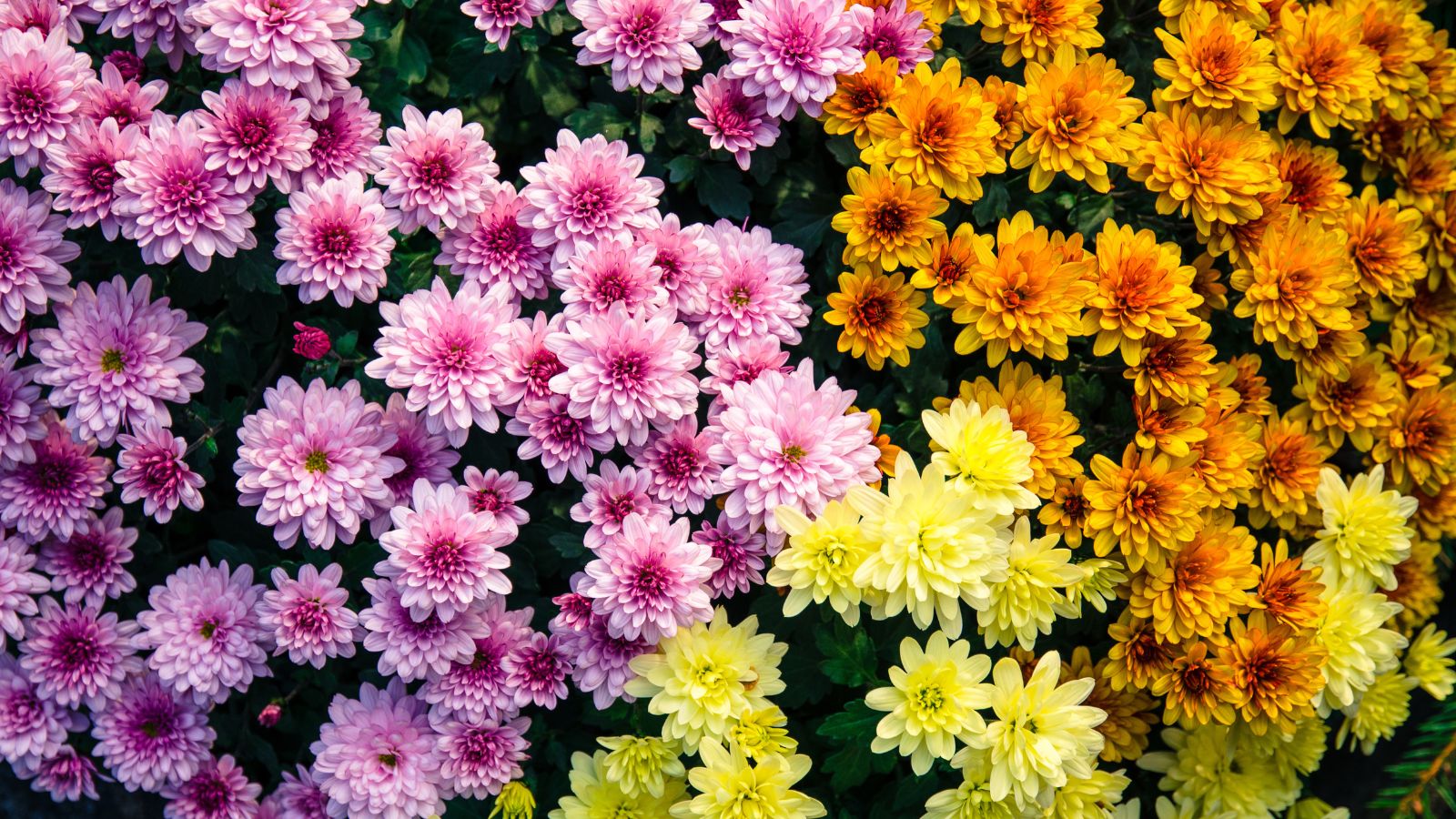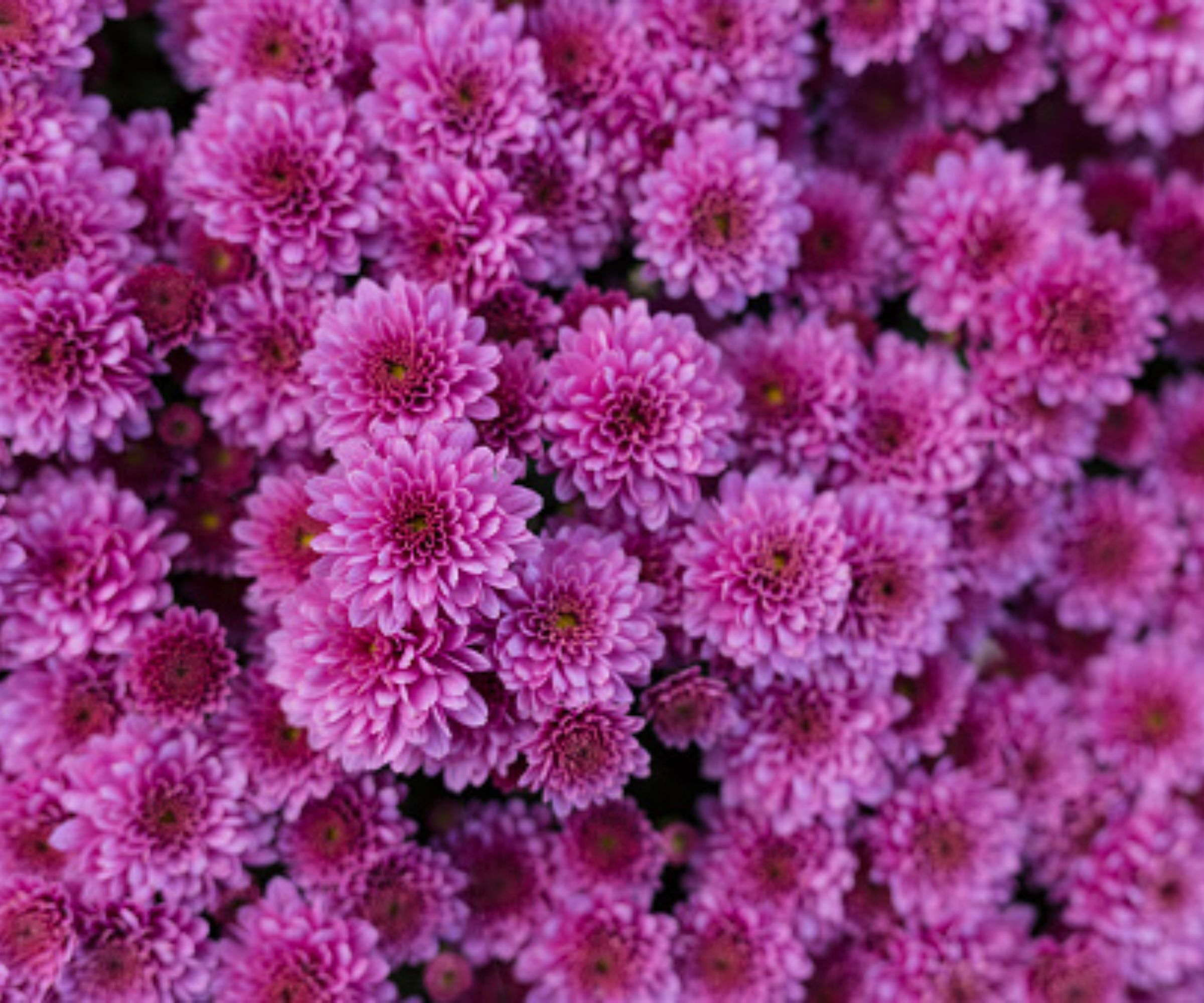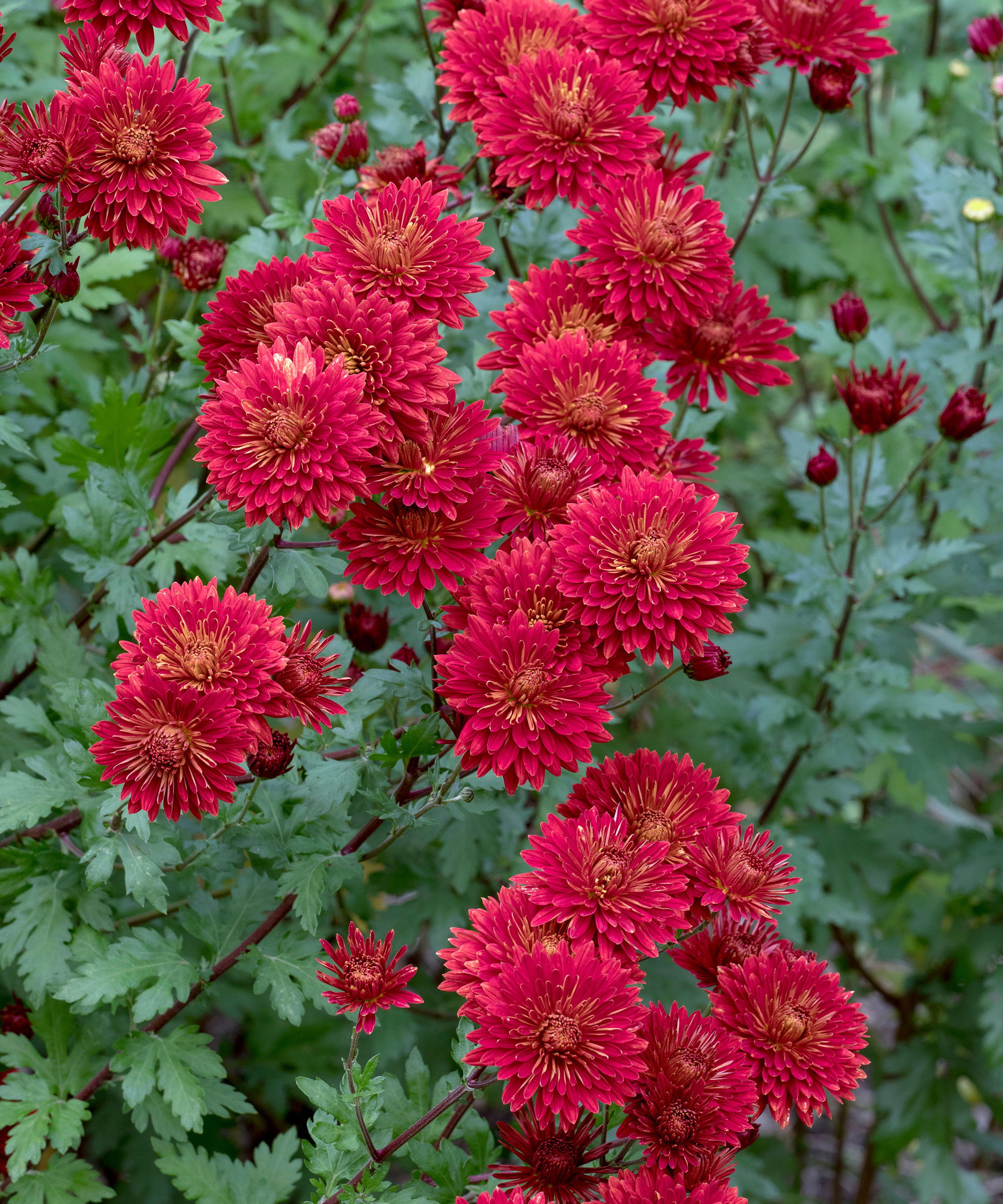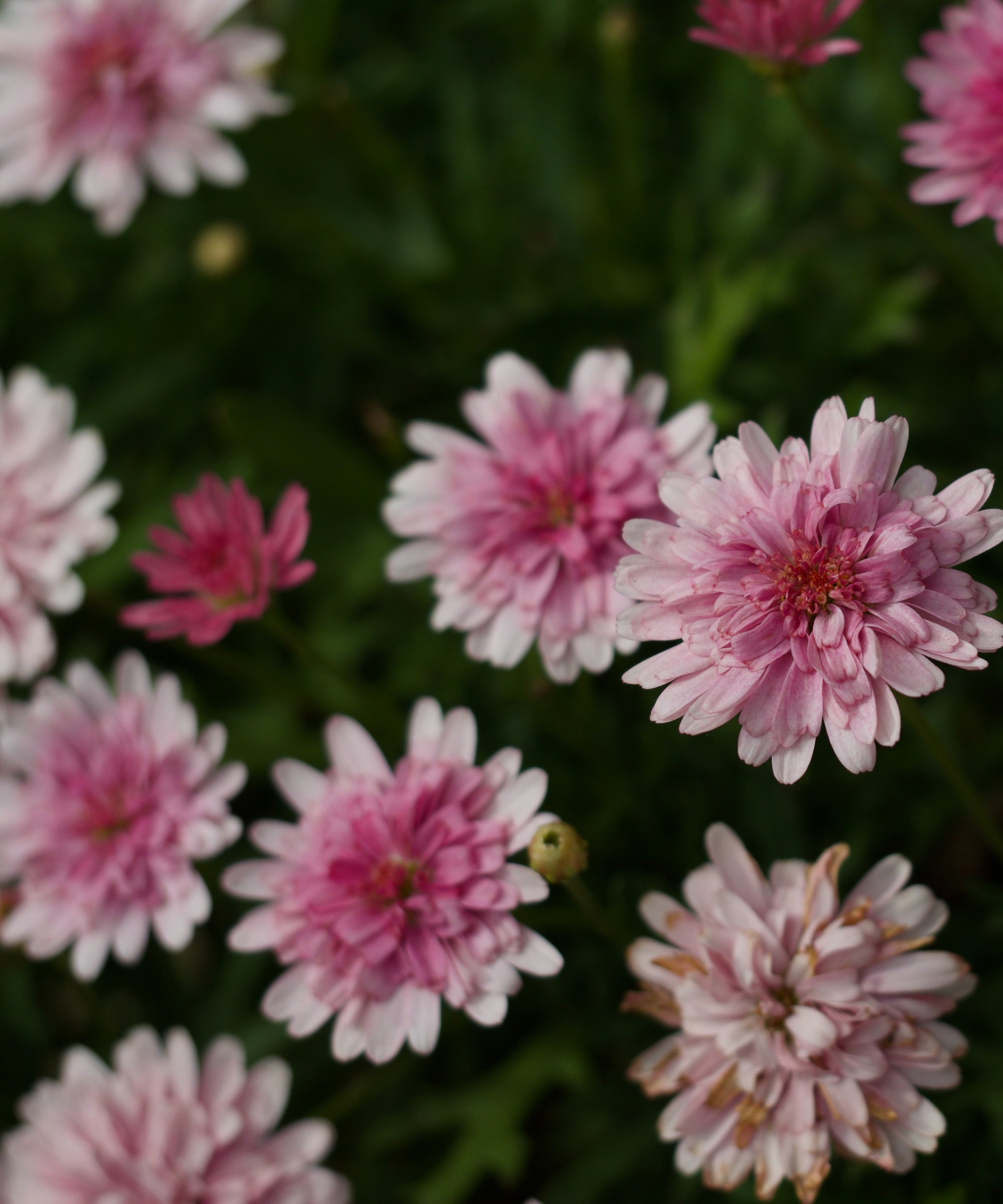
A garden brimming with blooms is every gardener's fantasy, which is why we recommend following these steps to keep your chrysanthemums blooming for as long as possible.
If you are grow chrysanthemums, you'll know that their bright, blousy blooms can really cheer up borders, so extending their flowering period is a no-brainer.
Below, we asked expert for their advice on the steps to take to get more blooms with little effort.
How to make chrysanthemums bloom again
All of these steps are super-easy to take and you'll be well-rewarded with bountiful blooms.
1. Ensure they're getting enough sunlight

Most flowers are sun lovers, and chrysanthemums are no exception. Drew Swainston, gardening expert at Homes & Gardens recommends:
'Chrysanthemums want sunlight and the more sun you can give them, the more they will bloom. Ideally they want six to eight hours a day of direct sunlight, at an absolute minimum give them four hours a day in the sun.
'Plant them in a spot in the back yard that gets lots of sunlight and in a fertile and well-draining compost and chrysanthemums will reward you with a bumper display of flowers.'
And if your chrysanthemums are in shade because other shrubs have increased their spread over summer, cut them back to allow the blooms to soak up more sun.
2. Get watering right

Watering plants correctly is key to them performing healthily. Chrysanthemums have the best blooms when their soil stays consistently moist, which should amount to watering them at least every other day, giving them about an inch of water over the space of a week. Make sure to water the plant at the base, and avoid watering the plant on its leaves and flowers.
It is possible to overwater chrysanthemums so make sure to do the finger test to test how moist the soil is before watering, avoiding making the soil waterlogged by overwatering.
3. Deadhead and prune

'Chrysanthemums will benefit from deadheading throughout the flowering period to keep the plant blooming and looking neat. Removing old spent flower heads will not only tidy up the plant but also put energy back into producing flowers rather than seeds.
'By going out with your pruning shears and removing old flower heads then the chrysanthemums can repeat bloom and the flowering period can last longer,' advises Drew Swainston.
One of the biggest deadheading mistakes is to cut yours back with dirty shears: always ensure they're cleaned first to avoid the transfer of plant diseases.
A helpful hack is to pinch off the tips of a newly grown chrysanthemums when it gets to six inches tall. The reason is this produces new blooms is because it can encourage the flower to branch and grow more flower buds.
In late spring to early summer, if you prune your chrysanthemums to halfway down their length, this will lead to more blooms later in the season.
4. Choose varied chrysanthemum varieties

There are many different varieties of chrysanthemums, about 40 to be precise. Different varieties have different blooming times, so you can choose which varieties you want based on when you want them to start blooming.
If you pick a number of varieties with staggered blooming periods you can extend flowering time in your garden. The National Chrysanthemum classification system can help you work out which bloom when.
5. Improve your soil

Soil that drains well will limit the risk that the soil will get waterlogged, which can cause root rot and damage to your chrysanthemums. Sandy soil is a good option since it drains quickly. You may also want to add materials with plenty of nutrients that will help the plant in addition to drainage.
This can include compost, and manure. If you are concerned your soil is not draining well then break up the soil by aerating it. There are also benefits to aerating before seeding.
6. Fertilize

Using a fertilizer is always a great idea to keep chrysanthemums strongly blooming. Apply fertilizer a couple of weeks after planting and then every other week.
Bone meal fertilizer is a great organic compost one for chrysanthemums, such as this Espoma Bone Meal, from Walmart from Walmart. Always read the instructions before using.
John Negus, gardening expert at Amateur Gardening leaves us with one last tip: 'From April to September, liquid-feed fortnightly with a tomato fertilizer'. This will give your chrysanthemum flowers a boost.
This should be an easy task for a bountiful result.
Buy chrysanthemums
These are our favorite chrysanthemums.
- Find Outsidepride Chrysanthemum Rainbow Mix at Walmart
- Find Yellow Chrysanthemum Seeds at Amazon
- Find Garden Mum, Mammoth Daisy Lavender at Burpee
- Find Garden Mum, Mammoth Daisy Red at Burpee
FAQs
What is the best time to plant chrysanthemums?
The best time to plant chrysanthemums depends on their blooming time and your local climate, but as a general rule plant them early into their growing season to allow them time to establish their roots. This will give more time for blooming.
These seasonal beauties are not just a great way to brighten your garden but chrysanthemums can deter ants which is a great bonus.







